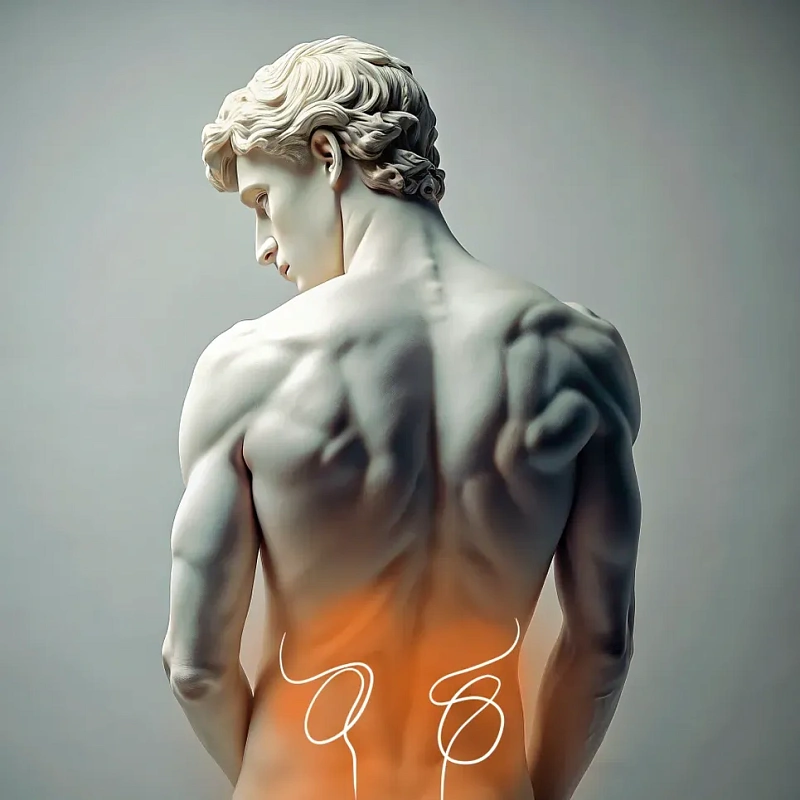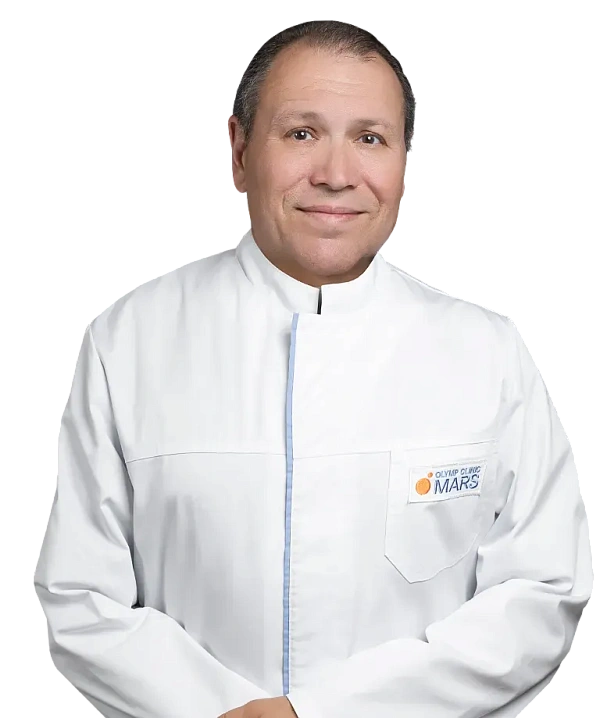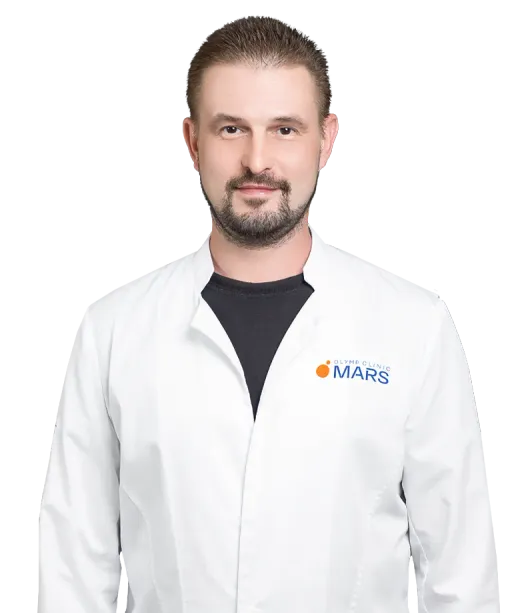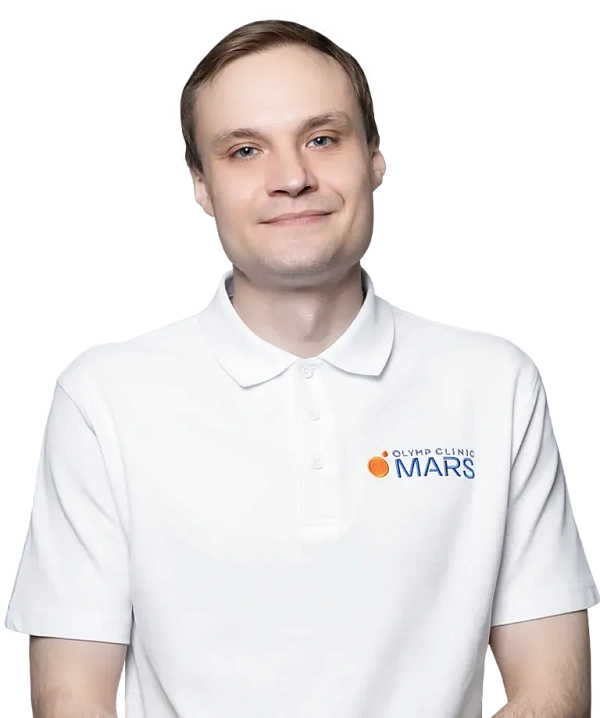Urological consultation
An appointment that involves a urologist diagnosing and treating diseases of the genitourinary system, including the kidneys, bladder, urethra, and in men, the prostate and male genitalia.

Urological diseases can cause pain, urinary disorders and sexual problems, interfering with normal life. The causes are varied and can include infections, inflammation, trauma, tumours and congenital abnormalities.
During the consultation, the urologist will be able to determine the exact causes of the symptoms using advanced diagnostic methods and develop an individualised treatment plan. They may prescribe laboratory tests, urography, cystoscopy and other imaging methods, if necessary. Urological consultation is essential for diagnostics and treatment, as well as for preventative care, especially in men over the age of 40, who are advised to have their prostate gland checked regularly.
Before the consultation you should: Compile previous assessments and test results. Prepare a list of medications and supplements taken. Record all symptoms and their duration.
After taking a medical history, the doctor will perform a physical examination, which in men may include a rectal examination of the prostate. Laboratory urine tests, ultrasound examination of the genitourinary organs, and other specific methods of examination may be prescribed based on the results of the examination. Based on the obtained data, the urologist develops a treatment plan, which may include drug therapy, physical therapy procedures or lifestyle changes.
The consultation with a urologist requires the use of: Instruments for urological examination. Ultrasound machines for the urogenital organs examination. A cystoscope to examine the inside of the bladder and urethra.
After urological consultation, the patient may be recommended various treatments such as medication, physiotherapy, surgery and other methods based on the diagnosis.
Benefits
Accurate diagnostics
Urological consultation helps to identify the causes of urological symptoms and make an accurate diagnosis.
Minimal invasiveness
Most urological procedures are minimally invasive.
Personal approach
Treatment is adapted to the specifics of the patient's condition.
Prevention
Promotes good health for years to come.
Frequently Asked Questions
How long does a urological consultation take?
Is it necessary to do any additional tests before the consultation?
What conditions does a urologist treat?
Is it necessary to see a urologist if there are no symptoms?
Didn't find an answer to your question?
You can describe your problem in detail and ask a question to the doctor. He will answer you and help you find a solution
Specialists
Find a SpecialistCandidate of Medical Sciences. Urologist, Andrologist, Surgeon. Head of the Urology Department.
Urologist, Pediatric Urologist, Ultrasound Diagnostician
Urologist and Ultrasound Diagnostician.
Urologist, Ultrasound Diagnostician
Similar referral activities
Spermatocelectomy
A surgical procedure to remove a cystic mass in the testicular epididymis.
Microsurgical varicocele treatment
One of the most efficient and safe ways to treat varicocele, particularly when it comes to preserving fertility and minimising the risks of recurrence.
Microsurgical varicocele treatment
Surgical treatment of varicocele. During surgery, the dilated veins of the testicle and the spermatic cord are removed to restore normal blood supply and improve reproductive function.
Minimally invasive ureteral stone removal
An advanced technique aimed at safe and effective removal of ureteral stones with minimal trauma.
Minimally invasive kidney stone removal
An advanced technique aimed at safe and effective removal of kidney stones with minimal trauma.
Circumcision
Circumcision is the surgical removal of the foreskin covering the head of the penis. It may be performed for medical indications, sanitary purposes, or cultural and religious reasons.
How to reach
How to get
From the Belorusskaya metro station of the Zamoskvoretskaya line - exit 4 After exiting the subway, walk through the pedestrian tunnel and climb the stairs. Move towards the railway tracks, go down the stairs immediately after them and walk along the house, then turn right onto 1st Yamskoye Pole Street. At the turn to 3rd Yamsky Pole Street, cross the road at the pedestrian crossing and continue along 1st Yamsky Field Street, after a few buildings on the left you will see Olympus Clinic MARS.
Travel time
9 minutes
Landmark
Olympus Clinic MARS sign
How to get
From the Belorusskaya metro station of the Ring line - exit 2. After exiting the subway, turn left and walk to the pedestrian crossing. Cross the road through two pedestrian crossings and move along the Tverskoy overpass. Go down the stairs immediately after the railway tracks, walk along the house, then turn right onto 1st Yamskoye Pole Street. At the turn to 3rd Yamsky Pole Street, cross the road at the pedestrian crossing and continue along 1st Yamsky Field Street, after a few buildings on the left you will see Olympus Clinic MARS
Travel time
11 minutes
Landmark
Olympus Clinic MARS sign
From the metro station "Tsvetnoy Bulvar"
1 exit to the city, then left to the Garden Ring, at the crossing to the right, crossing the boulevard, one more crossing and at the traffic light to the left. The Olymp Clinic building is located overlooking the Garden Ring to the right of the crossing. Travel time is approximately 9 minutes. Landmark - sign Olymp Clini
From the metro station "Sukharevskaya"
Exit 3 from the metro and 640 meters straight ahead, the clinic will be on the right. Landmark - sign Olymp Clinic
Parking lot map
Exit 3 from the metro and 640 meters straight ahead, the clinic will be on the right. Landmark - sign Olymp Clinic

From Sokol metro station
The last car from the center: follow the signs for Exit 5. From the glass doors to the right and go to the end of the passage. Exit to the city by the steps to the left. After exiting the crossing to the street, go straight along Leningradsky Prospekt to the intersection with Chapaevsky Lane. Next, turn right (onto Chapaevsky Lane) and walk to the Triumph Palace residential complex. Entrance to the territory: through checkpoint No. 1, opposite the Vkusville store, you will need to present your passport. After passing through the checkpoint, go up the stairs to the fountain, opposite it you will see our clinic.
Travel time
10-12 minutes
From the Airport metro station
The first car from the center: follow the Exit 2-3 signs. Turn left out of the glass doors and walk to the end of the passage. After exiting the crossing to the street, go straight along Leningradsky Prospekt to the intersection with Chapaevsky Lane. Next, turn left (onto Chapaevsky Lane) and walk to the Triumph Palace residential complex. Entrance to the territory: through checkpoint No. 1, opposite the Vkusville store, you will need to present your passport. After passing through the checkpoint, go up the stairs to the fountain, opposite it you will see our clinic.
Travel time
12-15 minutes
How to get
Entry to the territory is prohibited, but there are free city parking lots around the Triumph Palace residential complex, where you can easily find a place for your car. Free parking area:







